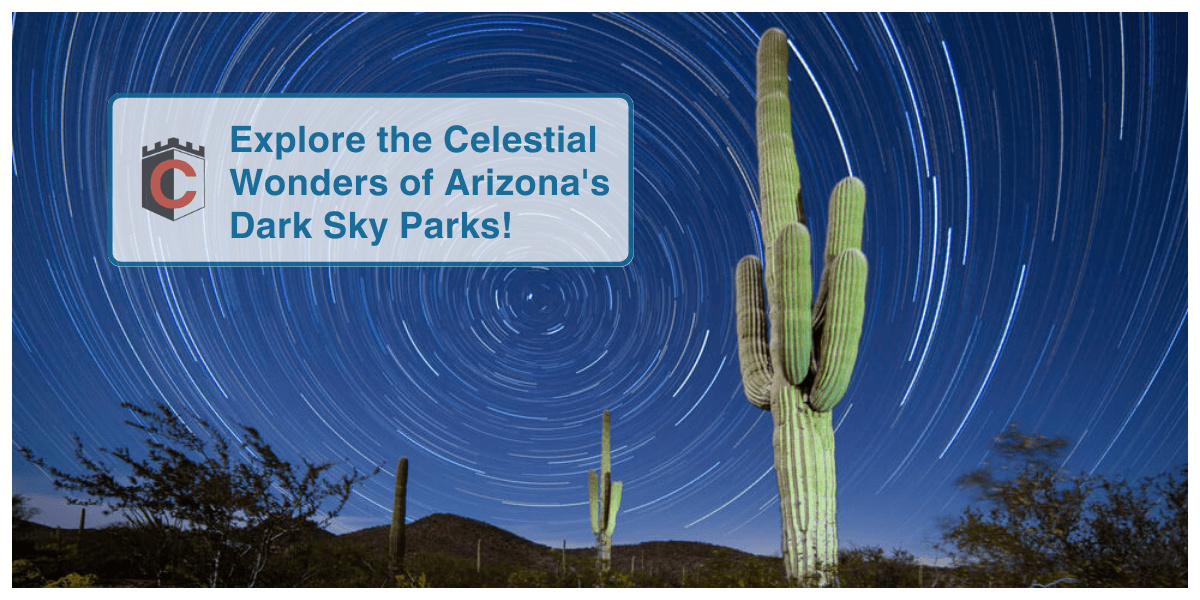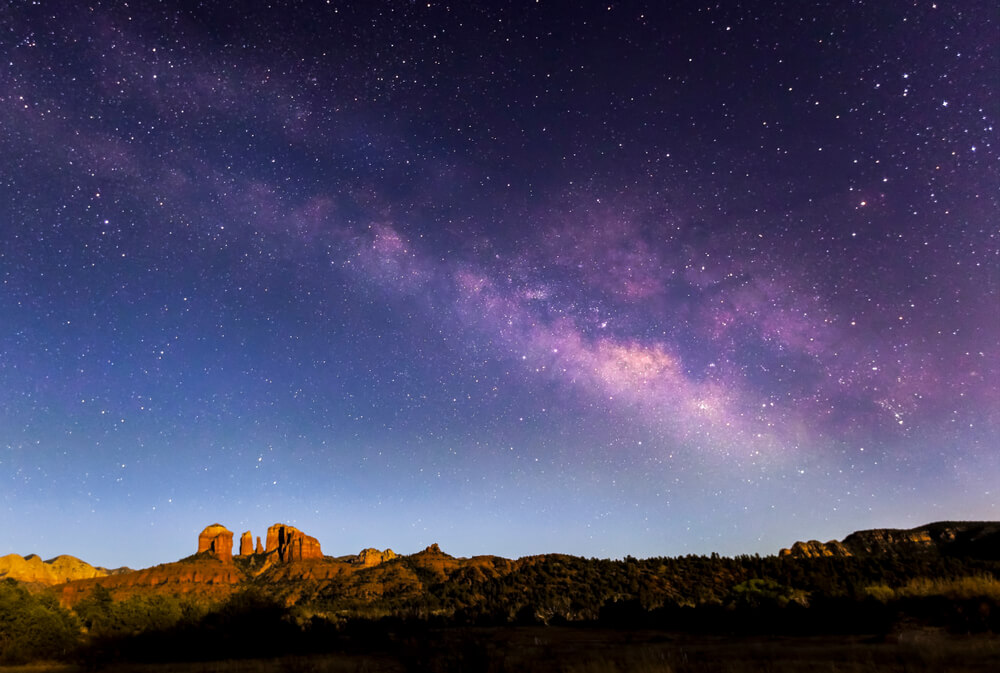Did you know the Four Corners region (Utah, Colorado, New Mexico, Arizona) has the most IDA Dark Sky Communities worldwide? We covered Colorado’s impressive list of certified Dark Sky Parks that work to cut light pollution and preserve the night sky in a previous blog. But Arizona has led the Dark Sky charge since 2001. Flagstaff, Sedona, Big Park, Cottonwood, Fountain Hills, and Thunder Mountain Pootsee are all designated Dark Sky Communities, where towns implement the same responsible lighting policies to protect the night.
Here are Arizona’s Dark Sky Parks that are perfect for day trips, camping, and stellar starry night parties for an unforgettable experience.
Chiricahua National Monument
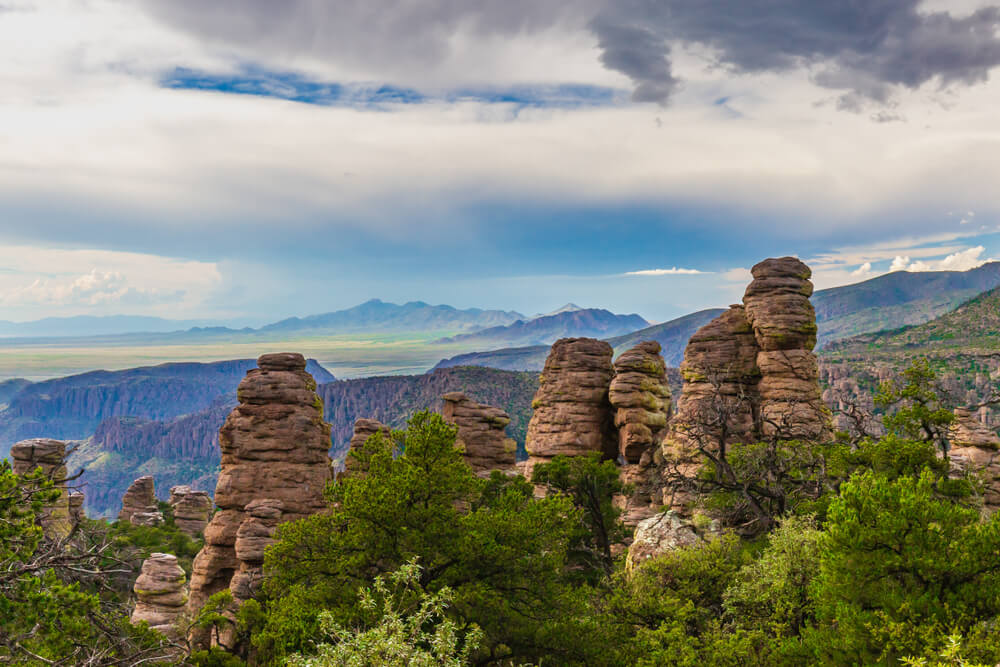
The Chiricahua National Monument in Southeast Arizona is known as a “Wonderland of Rocks” with 17 miles of day-use hiking trails through unique rhyolite rock pinnacles. This sky island also features a 27 million-year-old caldera and great wildlife viewing. Make reservations for the Bonita Canyon Campsite, which is open year-round, and enjoy the vast dark sky!
Grand Canyon National Park
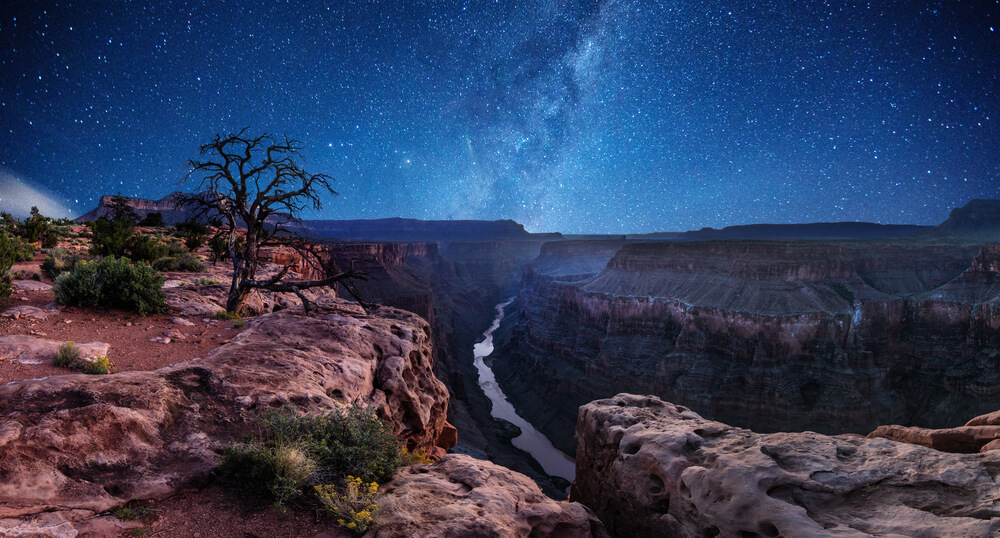
Imagine seeing the starry night sky above the grandest national park in the country! The Grand Canyon has no shortage of attractions and ranger-led programs and has multiple campgrounds- some even open year-round.
This park’s commitment to preserving and showcasing its natural skyscape includes hosting an Astronomer in Residency program and Volunteer Astronomer program, as well as its annual Star Party- a week-long celebration and gathering of stargazers!
Kartchner Caverns State Park

About an hour southeast of Tucson, at the base of the Whetstone Mountains, is a preserved living cave system called Kartchner Caverns. Get underground! Reserve your spot on a guided cave tour to see the unusual and colorful formations, like one of the world’s longest soda straw stalactites and the tallest column formation in the state. Learn about the seasonal bat colony and other local wildlife in one of the park’s programs. Hike the miles of trails in the park and walk through the Hummingbird Garden.
Reserve a campsite or cabin, or attend one of this extraordinary dark sky destination’s star parties to make the stars part of this adventure!
Bonus: Kartchner Caverns’ cave tours are made to be accessible for people of all abilities!
Oracle State Park

This 4,000-acre wildlife sanctuary is just under an hour northeast of Tucson, in the northern foothills of the Catalina Mountains. This park offers hiking, great wildlife viewing, and many educational programs. The 1.2-mile Geology Trail showcases 1.7 billion years of geologic history. Take a Geologist-led tour, or grab a trail map and explore it on your own. Join the evening events to learn about nocturnal wildlife, the moon, the stars, and even how to use a telescope!
There is no camping in this park, but you can call ahead for 24-hour access to the American Avenue Trailhead for an amazing night of stargazing.
Parashant National Monument
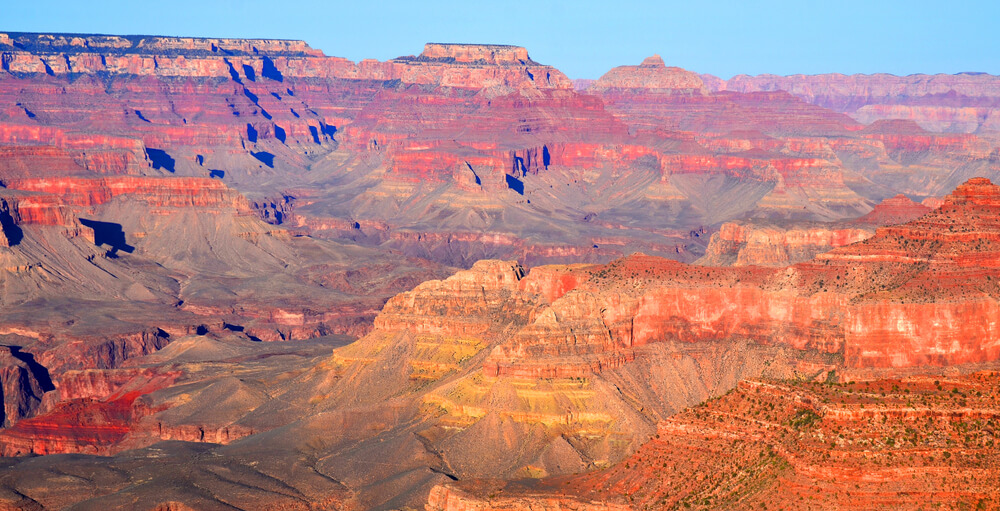
In the far Northwest corner of Arizona is the rugged and remote Grand Canyon-Parashant National Monument. This million-plus-acre expanse Pipe Spring National Monument is a truly wild adventure. Be warned! To enjoy this backcountry monument, you need a high-clearance 4×4 with all-terrain tires (and spares!) or UTV (Utility Task Vehicle). It’s important to read up on the road, and off-pavement travel safety information the journey requires.
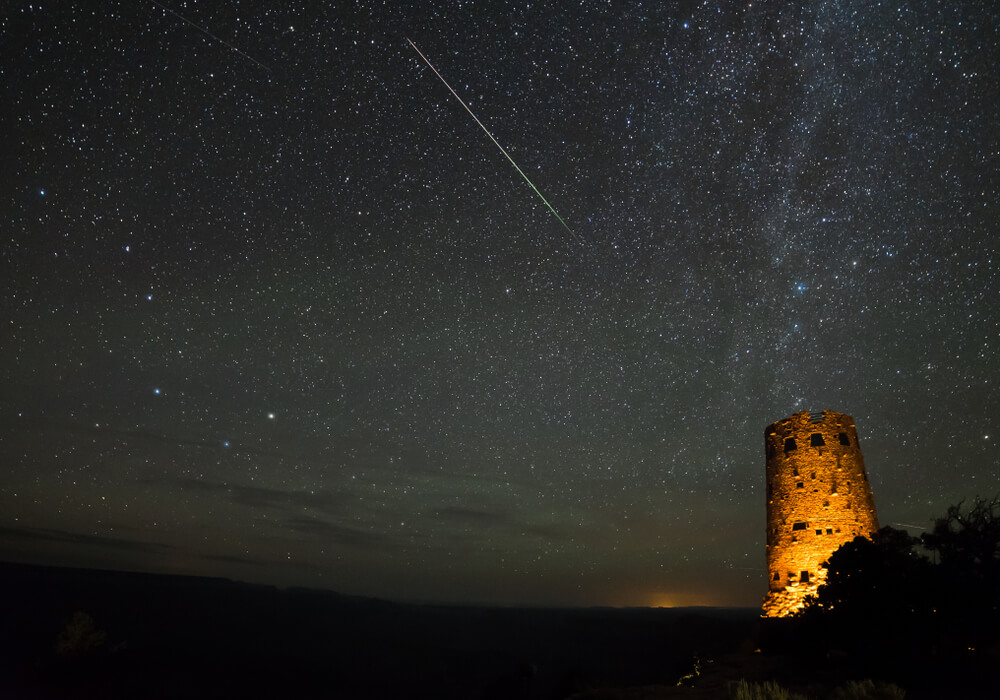
See thousands of petroglyphs at Nampaweap, the historical settlement structures of Tassi Ranch, and the colorful Moenkopi Formation at Hells Hole in the Mt. Logan Wilderness.
Since Parashant is one of the most remote places in the country, the natural darkness gives incredible views of the night’s lightscape above!
Petrified Forest National Park
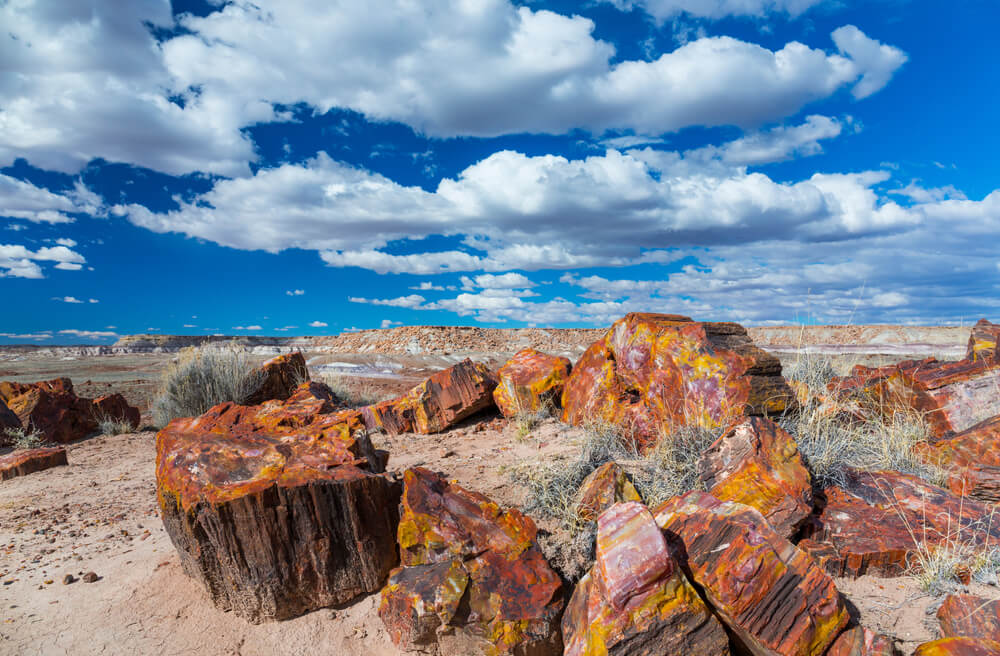
Just over an hour and a half east of Flagstaff on Highway 40 is one of the largest concentrations of petrified wood in the world. Petrified Forest National Park is in the middle of the Painted Desert and offers many trails to explore the scenic grasslands, rim woodland, the remains of 600 to 700-year-old pueblos, petroglyphs, Blue Mesa fossils, and crystalized and colorful petrified logs. Off-trail backcountry hiking is available for the more adventurous or for a more relaxed experience. Drive (or bike!) the 28-mile park road that has many viewpoints along the way.
Camp by backpacking into the designated Petrified Forest National Wilderness Area to sleep under the dark sky full of bright stars!
Sunset Crater Volcano National Monument
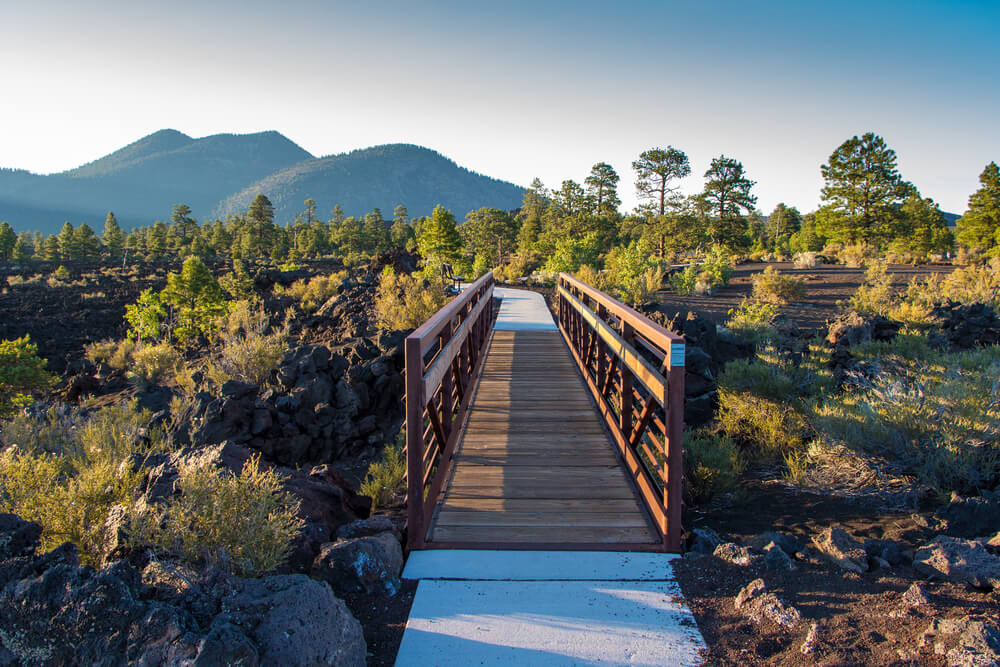
Only 30 minutes northeast of Flagstaff is the site of a volcanic eruption that changed the landscape a thousand years ago. Sunset Crater Volcano National Monument has five trails to see the jagged Bonito Lava Flow and surrounding volcanoes. Two of these trails are even wheelchair accessible! A surprising array of wildlife can be seen in this unlikely habitat.
Park rangers and volunteer astronomers lead night sky events throughout the summers.
Tumacácori National Historical Park
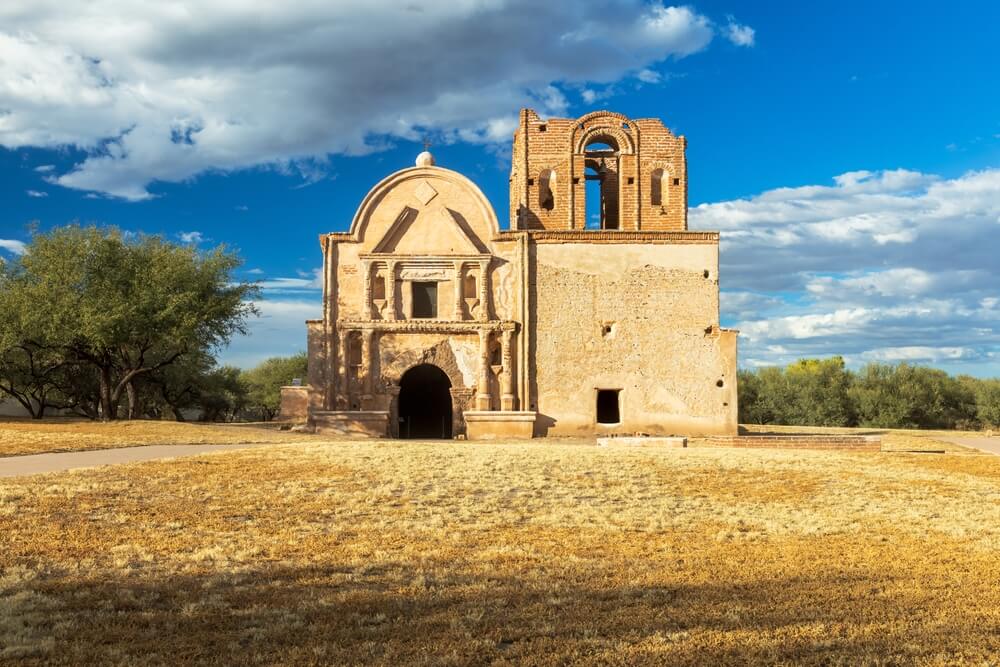
Less than an hour south of Tucson is the cultural and historical center of Tumacácori. Take a beautiful hike along the Santa Cruz River, jump back in time while taking in the art and architecture of the original mission features and the 1930s’ recreations, and learn about the tribal nations that gathered here by watching traditional food and craft demonstrations.
Tumacácori hosts regular events, including guided candle-lit starry night explorations.
Tonto National Monument
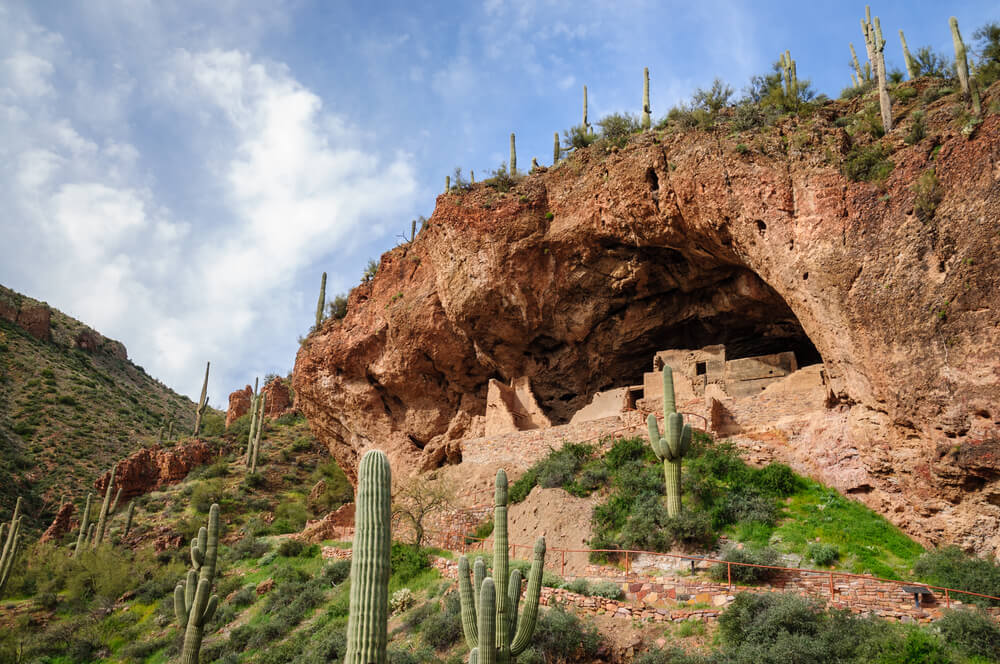
In the Upper Sonoran Desert, 2 hours east of Phoenix, is the Tonto National Monument. This park is home to two prehistoric Salado-style cliff dwellings and an impressive variety of artifacts from around 1300 CE. Learn about the architecture, ecosystem, and Salado people on a guided tour of the Upper Cliff Dwelling.
The monument is dedicated to preserving the astronomical heritage of the night sky the way it was seen 700 years ago and offers night sky events from November through April.
Walnut Canyon National Monument
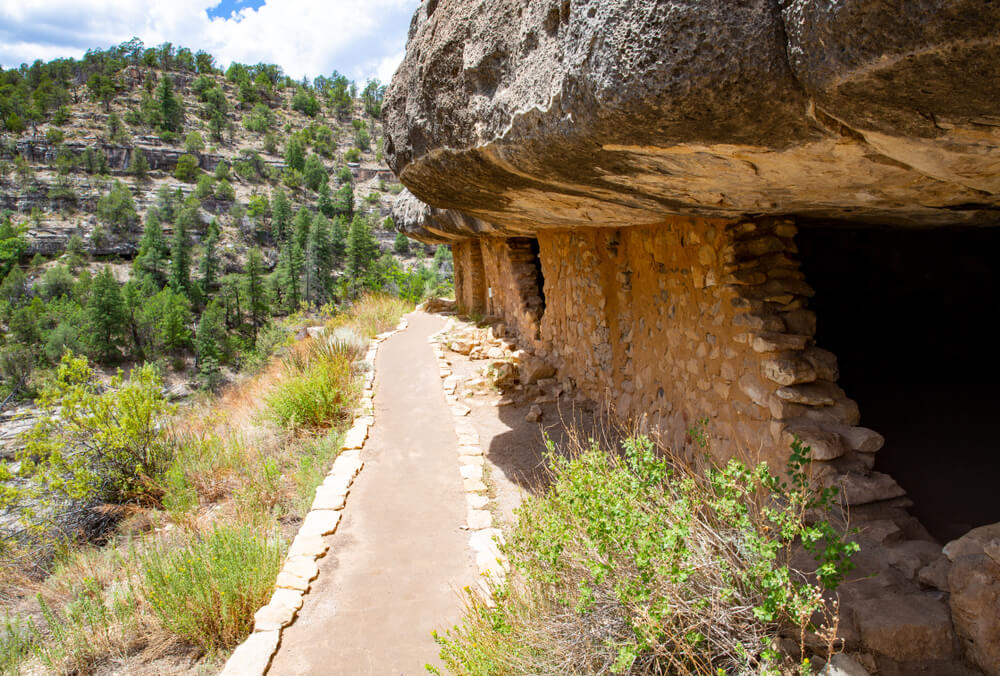
Another dark sky park near Flagstaff (just nine miles out!) is the Walnut Creek National Monument. This park has two main trails- one accessible and one strenuous- to explore twenty-five ancient cliff dwellings along the curved rock formations of the steep canyon. The 3600 acres protect a diverse ecosystem of pine forest and desert and all the wildlife to be seen therein.
Wupatki National Monument
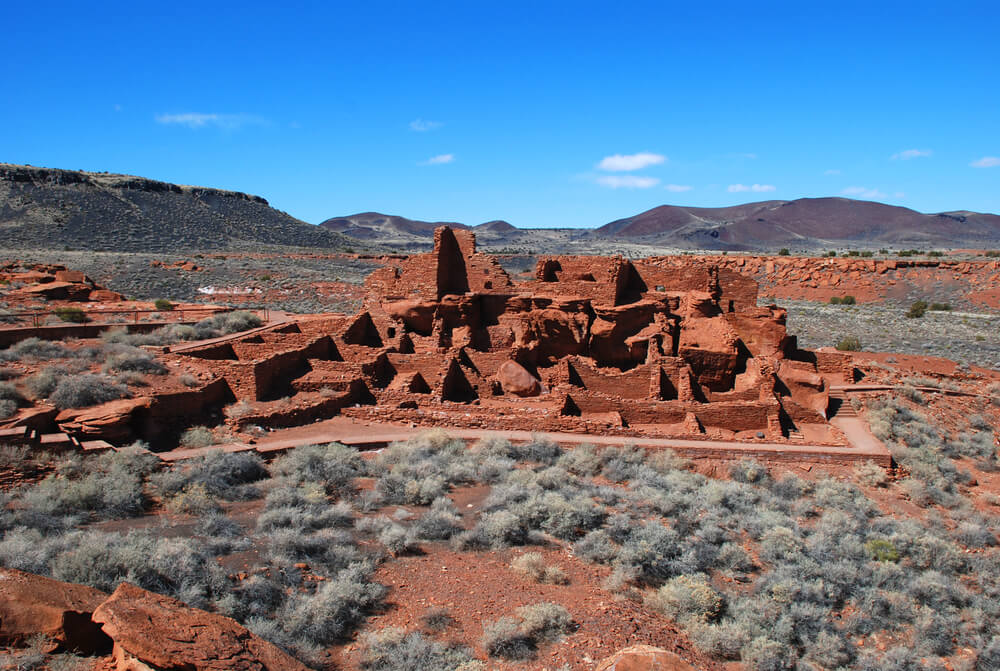
Wupatki is another Flagstaff-area national monument. It has four easy trails to view the pueblos, three of which are accessible. More advanced off-trail guided hikes offer discovery of the Wupatki backcountry and can last anywhere from two hours to two days, like the Crack-in-Rock overnight hike! Watch the celestial lights from atop a mesa of the 12th-Century Ancestral Puebloan site!
Happy Stargazing!
To help protect these sites and the dark skies above, remember to leave no trace and respect the natural ecosystems, and pack a red flashlight and a printed star map.
Visit the Castle RV Storage blog for all the best Arizona and Colorado Camping, Travel, and RVing tips. Follow us on Facebook and Instagram to stay connected and share our love of the RV Travel Life!

